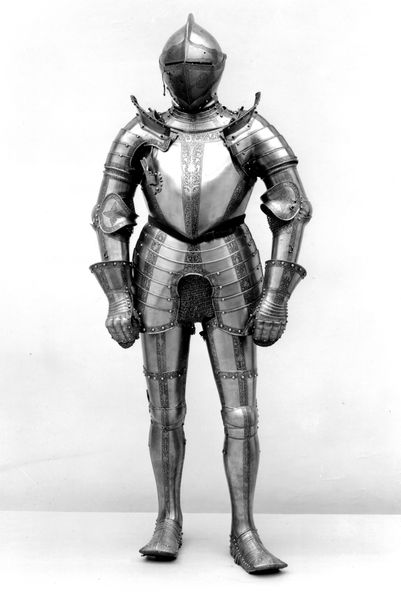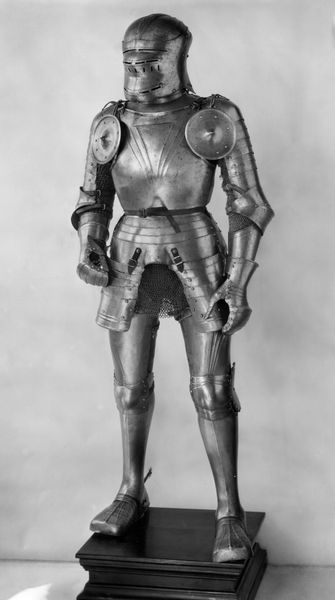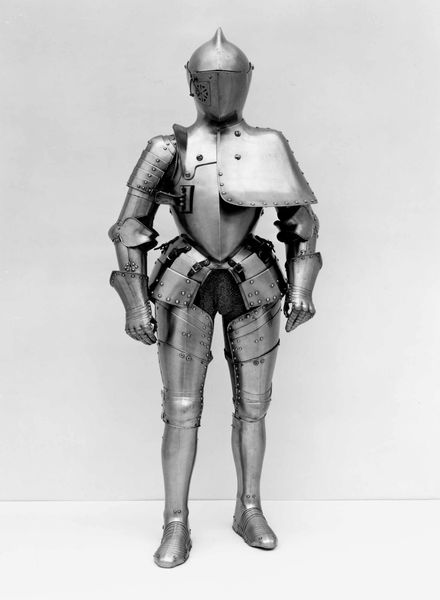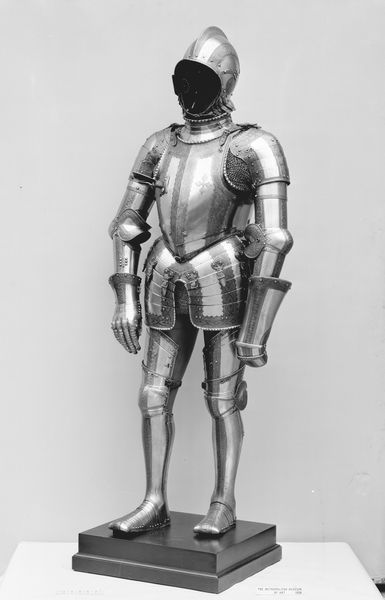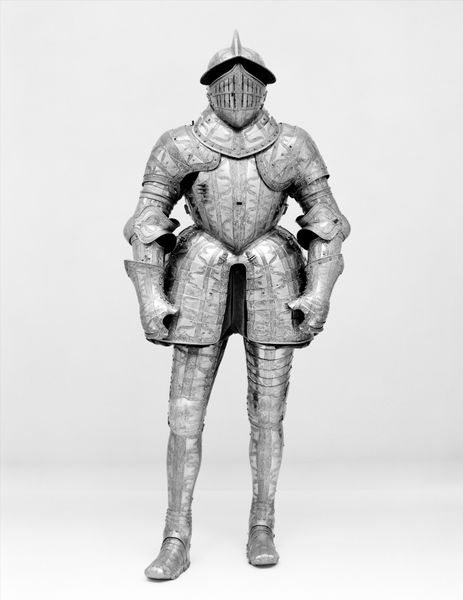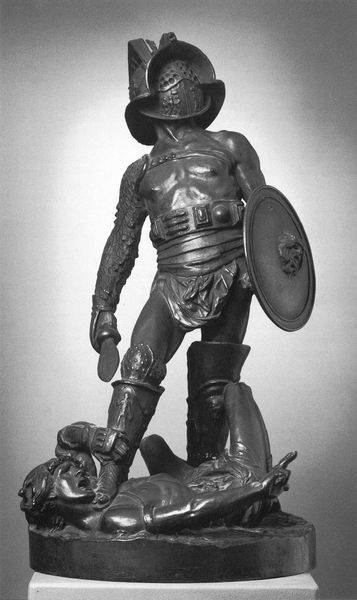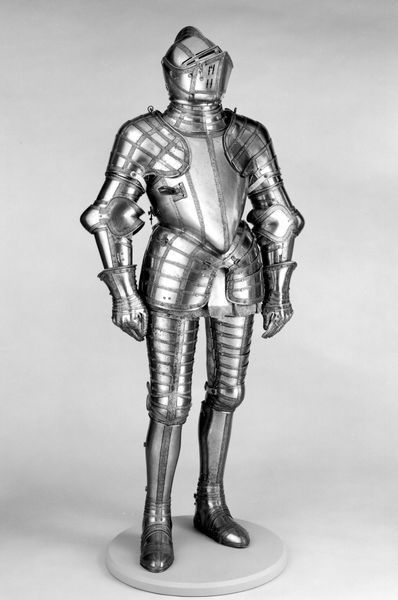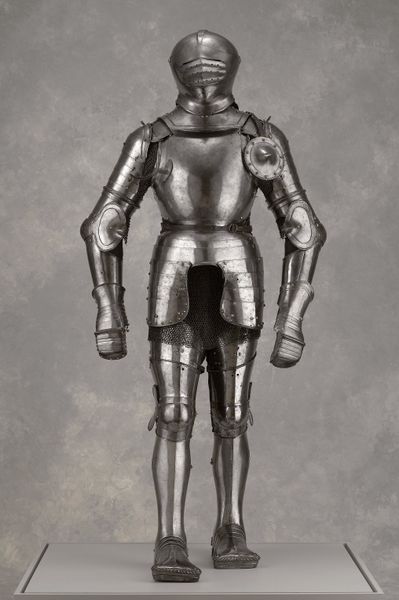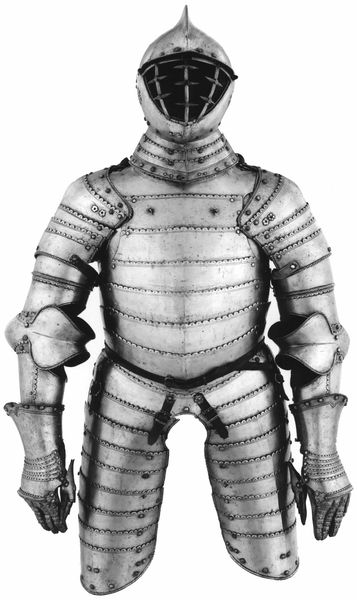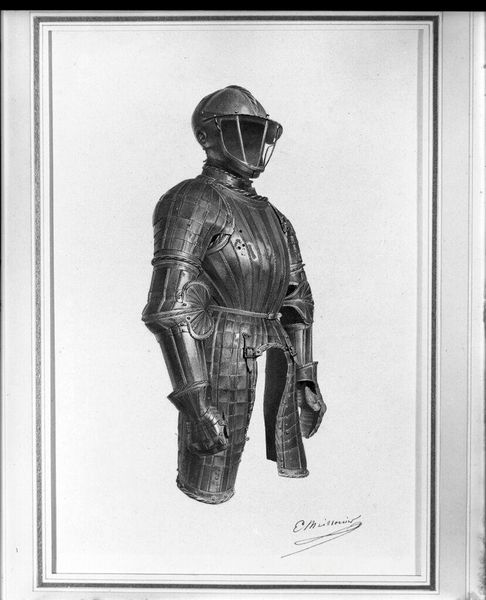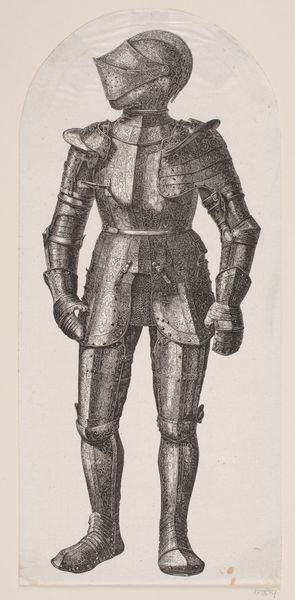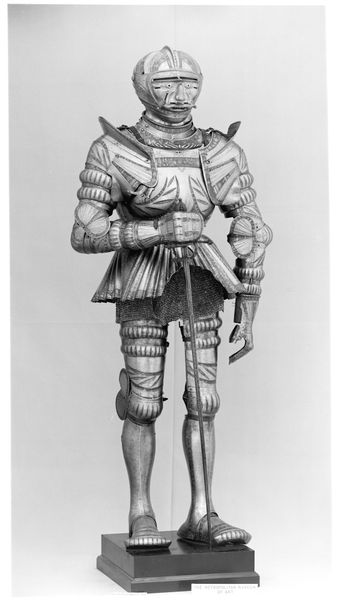
metal, sculpture
#
medieval
#
metal
#
sculpture
#
figuration
#
form
#
geometric
#
ancient-mediterranean
#
sculpture
#
front view
Dimensions: Wt. 55 lb. (24.95 kg)
Copyright: Public Domain
Editor: This is a Jousting Armor created between 1555 and 1605, made by Anton Peffenhauser. It's currently housed in the Metropolitan Museum of Art. The stark frontality of the display gives it a rather intimidating presence. How do you interpret this work? Curator: Intimidating is a key word, isn't it? This armor, beautiful as it is, speaks volumes about the power structures of its time. Jousting was far more than a sport; it was a ritual performance of aristocratic masculinity and dominance. Think about the resources required to create and maintain such a suit. Editor: Absolutely. It must have taken immense skill to forge something like that, too. Curator: Precisely. And who benefited from that skill? This armor isn't just protection; it's a symbol of privilege. It represents the martial prowess that reinforced social hierarchies, with the landed gentry monopolizing violence and solidifying their control. It reflects very limited access and agency. The geometric forms also deserve careful thought. Editor: The circles and sharp angles really stand out. Was that purely for aesthetic reasons, or did the shape itself play a role? Curator: Both, I would argue. Aesthetics are never neutral. The sharp lines, the overall imposing form – they are meant to project an image of strength, invincibility. These are not just practical choices; they are visual cues that underscore the wearer's status and power. Consider, too, that this image contrasts vividly with how conflicts are pursued today, shifting who controls and yields military power. Editor: That’s fascinating. So, seeing it this way invites us to consider the history of social inequality and how objects can reflect that? Curator: Exactly! This isn't just a suit of armor; it's a frozen moment in a historical narrative of class, gender, and power. Recognizing that helps us engage with art history in a more meaningful way. Editor: That's a perspective I hadn’t considered before. It definitely makes me see it in a new light.
Comments
No comments
Be the first to comment and join the conversation on the ultimate creative platform.

